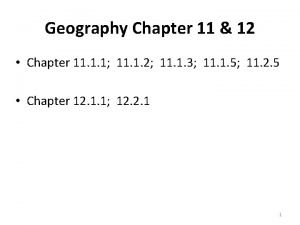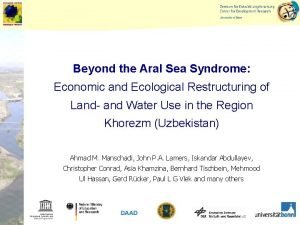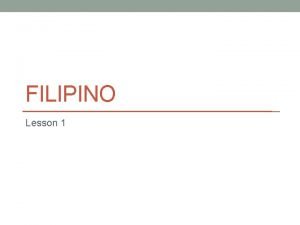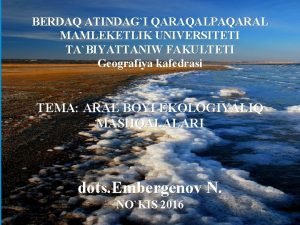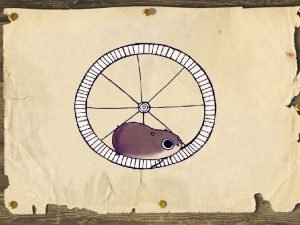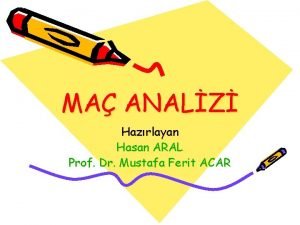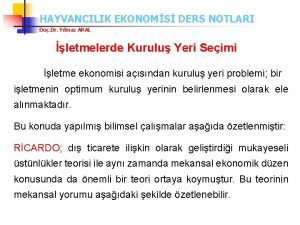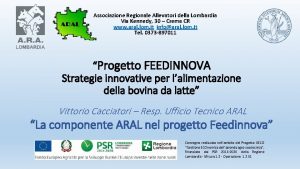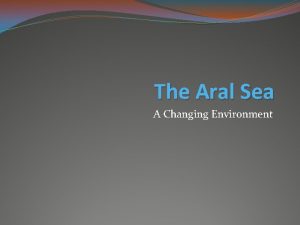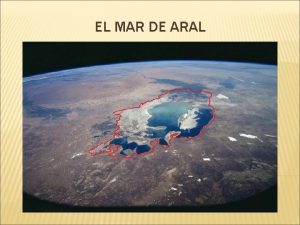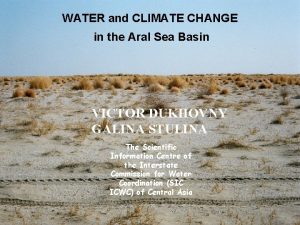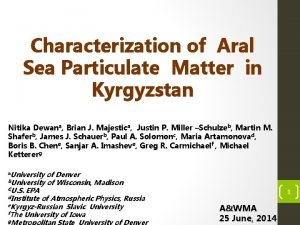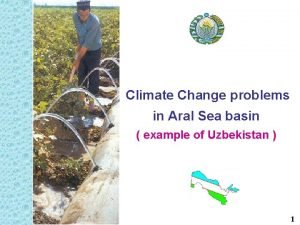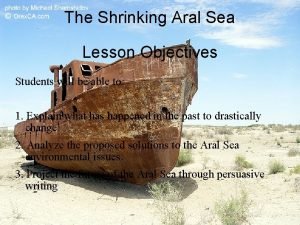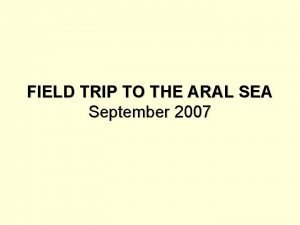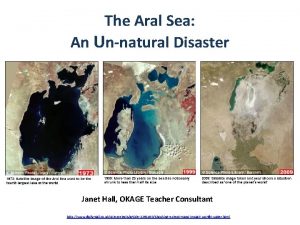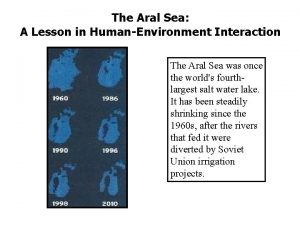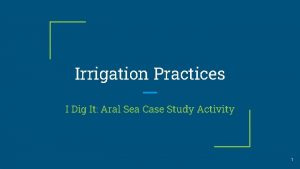The ARAL SEA How poor water management has


















- Slides: 18

The ARAL SEA How poor water management has had disastrous environmental, economic & social consequences.

Location • The Aral Sea lies on the border of Kazakhstan & Uzbekistan, in Central Asia. • It is part of what was until 1991 the old Soviet Union. • It was the World’s 4 th largest inland sea. 2

Location • The Aral sea is in the middle of the Central Asian Desert. • Summer temperatures rise to over 40 o. C. • The Aral Sea is fed by 2 rivers Syr Dar’ya & Amu Dar’ya. These rivers rise in the mountains to the South. • There is no outlet river. 3

The Problem • The Aral Sea is gradually shrinking & drying up. • The sea has now divided into 2 smaller seas, shortly to be 3. • Why? 4

5

Causes • In one word – Cotton • During the Soviet era Uzbekistan was designated as a major cotton growing region of the USSR. Cotton is known as “white gold” & is highly profitable to grow. • The Fergana Valley became a huge cotton growing area. 6

Causes • To make cotton grow in a desert large quantities of water are needed (Irrigation). • Dams were constructed on the rivers & canals diverted the water to the cotton growing farms. • This reduced the flow of water reaching the Aral Sea. 7

The Second Problem • The water quality in the Aral Sea began to decline rapidly 8

Causes • The sea became saltier due to evaporation. • As the sea shrank the remaining salt was concentrated in less water 9

Causes • More serious was pollution from a range of toxic chemicals. • Large quantities of fertilizer, insecticides, herbicides, defoliants etc were applied to the cotton. • These chemicals were returned to the rivers with the remaining irrigation water & eventually ended up in the Aral Sea. 10

Impacts • The wetlands of the river deltas dried out, drastically affecting the wildlife of the area. • Large areas of the former Aral Sea were reduced to barren lifeless salt plains. • The fish numbers & the birds which fed on them declined rapidly. 11

Impacts Once prosperous seaside villages were left “high & dry” many kilometres from the receding sea this caused further problems. • Local wells have dried up as the water table has dropped. • The fishing industry collapsed. • Fish processing factories closed or had to be supplied from outside areas. • Unemployment rose rapidly, people began to migrate away 12 from the area.

Impacts As the sea shrank boats were left “high & dry” the area is now littered with rusting hulks. 13

14

• Perhaps the biggest problem has been a decline in the health of the local inhabitants. • The chemicals have seeped into the local water supply causing a wide range of health problems such as cancer, tuberculosis, deformities in babies, liver & kidney failure, anaemia, lung disease & high infant mortality etc. Polluted water Signing up for health care A TB sufferer Infant Mortality & childhood illnesses have increased. 15

16

The remaining Issues • • • The scheme is no longer under the control of one government. International co-operation is required to reach sustainable solutions. Local populations are in desperate need of safe drinking water. The sustainability of growing cotton under irrigation in desert regions needs to be considered. Economic activities that are less dependent on large quantities of water need to be considered. Agricultural efficiency needs to be reviewed. There are significant loss of cotton and rice in storage and transpiration. Crop rotation and appropriate technologies need to be used to improve efficiency. Irrigation systems need to be redesigned to reduce water loss and the allocation of water needs to be rationed. 17

Power. Point developed by Allegra Smisek Hopkins, MN
 The western siberian plain __________.
The western siberian plain __________. Aral sea changed over time
Aral sea changed over time Aral sea syndrome
Aral sea syndrome Water and water and water water
Water and water and water water Troy aegean sea
Troy aegean sea Yellow sea and east china sea
Yellow sea and east china sea Hydra jellyfish sea anemone sea urchin
Hydra jellyfish sea anemone sea urchin Marlin symbolism
Marlin symbolism Sea stack sea arch
Sea stack sea arch Programa sa edukasyon
Programa sa edukasyon Panlapi
Panlapi Aral apatshiligi
Aral apatshiligi Mga tauhan ng banaag at sikat
Mga tauhan ng banaag at sikat Os dois principais rios que alimentavam o mar de aral
Os dois principais rios que alimentavam o mar de aral Aral game
Aral game Amisco prozone
Amisco prozone Prof. dr. yılmaz aral
Prof. dr. yılmaz aral Hayvancılık ekonomisi ders notları
Hayvancılık ekonomisi ders notları Associazione regionale allevatori lombardia
Associazione regionale allevatori lombardia
